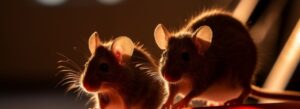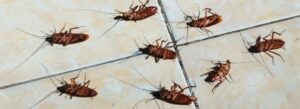When a large, buzzing insect flies past your garden or clings to the eaves of your roof, it’s easy to assume it’s a wasp—but what if it’s a hornet?
Hornets and wasps may look similar, but there are key differences in size, behaviour, colouration, nesting habits, and risk levels. Knowing how to tell them apart can help you respond appropriately—especially when your health and safety are on the line.
At Innovation Pest Control, we specialise in identifying and removing both hornets and wasps across Kent and the surrounding areas. This detailed guide will help you confidently tell the difference between a hornet and a wasp in the UK, understand the species involved, and know what steps to take next.
What Are Wasps and Hornets?
Both hornets and wasps belong to the Hymenoptera order, specifically the Vespidae family. Common species in the UK include:
- Vespula vulgaris (common wasp)
- Vespula germanica (German wasp)
- Vespula rufa (red wasp)
- Median wasp (Dolichovespula media)
- European hornet (Vespa crabro)
- Asian hornet (Vespa velutina) — an invasive species under monitoring by the National Bee Unit
Other species like the hornet moth (Sesia bembeciformis) and urocerus gigas (giant woodwasp or horntail) are sometimes mistaken for hornets due to mimicry, but they do not sting.
Hornet vs Wasp – Key Differences
| Feature | Wasp | Hornet |
|---|---|---|
| Size | 1–2 cm | 2.5–3.5 cm |
| Body Shape | Slender with narrow waist | Bulkier with robust thorax |
| Colour | Bright yellow and black | Dark brown, orange, reddish tones |
| Buzz Sound | High-pitched | Deep, loud drone |
| Aggression | Easily provoked | Highly defensive near nests |
Hornets have a broader abdomen, larger eyes, and more powerful mandibles. Their stinger is connected to an ovipositor, and their venom causes more intense allergy and anaphylaxis reactions.
Behavioural Differences
Wasps—particularly yellowjackets and vespula vulgaris—are more attracted to human food like sugary drinks, meat, and fruit. Their behavior includes scavenging around bins and picnic tables.
Hornets are top predators. They hunt moths, flies, beetles, hoverflies, mason bees, and even bumblebees, tearing them apart to feed their offspring in individual cells of their nest. Hornets are a growing threat to pollinator species, especially honey bee colonies and wildlife habitats.
Nesting Habits
- Wasps like the median wasp, vespula rufa, and vespula germanica build nests in:
- Bushes or shrubs
- Roof voids
- Underground burrows
- Garages, lofts, and the shed
- Hornets prefer:
- Tree hollows (especially oak trees)
- Attics and eaves
- Behind cladding and under decking
Hornets and wasps create their nests from wood fibre chewed into a pulp with saliva. The result is a papery structure filled with hexagonal cells, one per egg or developing larva.
Risk to Humans and Pets
Hornets and wasps defend their colony aggressively. Their stings deliver venom that causes:
- Intense pain and swelling of the skin
- Allergic reactions and anaphylaxis
- Risk of secondary infection, particularly in children and the elderly
Wasps may sting unprovoked, especially in late summer. Hornets are triggered by proximity to their nest and can swarm after releasing a defensive pheromone.
Seasonal Patterns and Hibernation
Both hornets and wasps follow seasonal cycles:
- Spring: Queens emerge from hibernation and begin nest building
- Summer: Colonies grow rapidly and feed on nectar, pollen, and insects
- Autumn: Nest collapse begins; new queens disperse
Species like dolichovespula saxonica, dolichovespula sylvestris, and dolichovespula media have similar lifecycles.
Lookalike Species and Mimics
Some non-stinging species are often mistaken for hornets or wasps due to mimicry:
- Hornet moth (Sesia bembeciformis)
- Urocerus gigas (horntail)
- Hoverfly – harmless mimic with black/yellow markings
- Mason bee – solitary pollinator, often found in plant stems
Proper identification is essential. If unsure, never approach the nest—call professionals.
Ecology and Crops
Wasp and hornet presence can have negative effects on crop yield and plant health. Their predation on pollinators impacts ecology, reducing pollination and increasing vulnerability to pests.
Some wasp species may benefit agriculture by consuming caterpillars and harmful insects. However, the damage caused by Asian hornets—especially to honey bees—makes them a top concern for UK agriculture.
Can Pesticides Help?
DIY pesticide use is risky and often ineffective. Incorrect application may cause hornets to scatter and establish nests elsewhere. In some cases, it increases aggression.
Our treatments at Innovation Pest Control are pet-safe, professional-grade, and tailored for local environments across Kent.
How Innovation Pest Control Can Help
We offer:
- Same-day surveys
- Wasp nest removal
- Hornet nest identification
- Reporting of Asian hornet activity to the National Bee Unit
- Follow-up visits
We use discreet vehicles, offer full insurance, and serve:
- Ashford, Maidstone, Canterbury, Tonbridge, and more
Final Advice: Don’t Rely on Guesswork
Spotting a hornet or wasp? Unsure what you’re dealing with? Whether it’s a hornet moth, paper wasp, or asian hornet, we’ll confirm the species and handle removal safely.
📞 0773958655 📧 enquiries@innovationpestcontrol.co.uk 🌐 innovationpestcontrol.co.uk
Innovation Pest Control – Professional. Local. Trusted.







